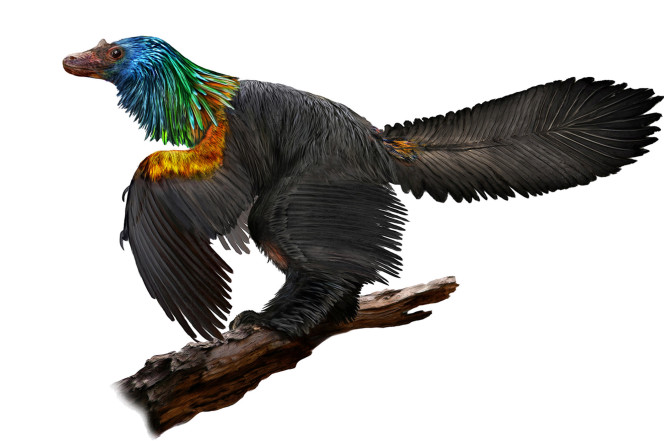Scientists announced that there once was a bird-like dinosaur the size of a crow that had colorful, iridescent feathers in northeastern China.
This dinosaur lived 161 million years ago during the Jurassic Period, and is now called Caihong, the Mandarin word for rainbow, the New York Post reports. The full name is Caihong juji, meaning “rainbow with a big crest.”
The nearly complete, spectacularly preserved fossil showed microscopic structures indicating that it had iridescent feathers, specifically on the head, neck and chest. The feathers would have shimmered and shifted in the light, similar to those of hummingbirds.
Found in Hebei Province, the dinosaur discovery “suggests a more colorful Jurassic World than we previously imagined,” according to evolutionary biologist Chad Eliason of the Field Museum in Chicago, one of the researchers in the study.
The scientists used powerful microscopes to identify remnants of organelles called melanosomes in the feathers. These miniscule organelles are responsible for pigmentation, and their shape determines color. The fossil had pancake-shaped melanosomes that were similar to hummingbirds – which have iridescent feathers.
While much of the dinosaur’s body was covered in dark feathers, the head and neck had ribbon-like colorful feathers. The Caihong had many bird characteristics but scientists say it was unlikely to have gotten off the ground. The plumage might have been for mating, and could also have provided insulation.
The creature was a two-legged predator, with a Velociraptor-like skull and sharp teeth, and a crest that resembled bony eyebrows. It probably hunted small mammals and lizards.
Xing Xu of the Chinese Academy of Sciences, a paleontologist, said, “It is extremely similar to some early birds such as Archaeopteryx. Its forelimbs were configured like wings. To be honest, I am not sure what function the feathers have, and I don’t think that you can completely exclude the possibility that the feathers helped the animal to get in the air.”
The study was published in Nature Communications.
























